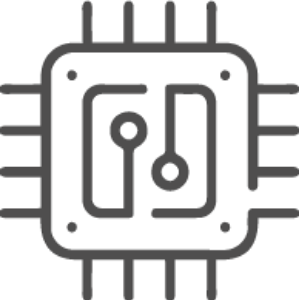Artificial Intelligence (AI), and specifically Machine Learning (ML), are being tested in an increasing number of fields, including data-centric environments. Image or text analysis, speech recognition, chatbot interactions, custom machine learning models… all these are elements that can directly benefit public safety and security organisations.
But can Artificial Intelligence help save more lives? We believe that AI has the potential to enable significant savings compared to current methods employed by the emergency medical services sector, as well as offer added benefits of automated analytics to measure dispatch quality and continuous training of human operators.
ai Special Project
EENA intends to launch a Special Project on AI for PSAPs and emergency dispatch centres in 2024. This Special Project would consider testing the use of various AI applications in PSAPs and control rooms across Europe. Indicate your interest below:
ai & emergency services
In an emergency, every second counts. PSAPs (Public Safety Answering Points) are high pressure environments, where multiple streams of data – location, caller audio, and other contextual data – can interact and appear simultaneously. For the most efficient outcome, it is essential to use and understand all of these resources. Machines can process these huge amounts of data faster than humans can, and also learn how to constantly improve.
How can Artificial Intelligence benefit the work of emergency services?
- Artificial Intelligence can process multiple streams of data almost instantly, ensuring that nothing is missed by a human call-taker that may be essential to the emergency response given.
- AI can be used to enhance the audio quality of calls to emergency services, providing services such as automated captions or translation. This saves call-takers time by not having to ask the caller to repeat themselves, for example.
- AI can be used to design, and implement, call-takers’ decision trees – allowing for faster and more efficient dispatch decisions.
- AI can plan the routes of emergency vehicles. For example, AI can give emergency departments an estimated time of arrival for an ambulance, giving hospitals vital time to prepare for patients.
- AI can monitor social media for faster indications of potential disasters before emergency services may be made aware through emergency communications.
- Social media listening can identify when a new topic is trending, alerting authorities and first responders to respond in a timely manner.
- During a large-scale event, there may be longer wait times when trying to reach emergency services – due to a limited number of humans able to man the physical lines, which may be receiving thousands of calls. A chatbot, a computer program designed to simulate conversation with users, can respond to multiple queries simultaneously: freeing up human call-takers for more complex inquiries.
- AI and ML can assist in cybersecurity and monitoring cyberspace, such as fraud detection and helping to find information on the various layers of the web.
- With the broad expansion of IoT devices and the opportunity to integrate those sensors into the PSAP; better sensor integration, coupled with edge analytics, can increase the visibility and understanding (situational awareness) on what is occurring.
eena ai project with Corti: 2018
That is why EENA launched in May 2018 a year-long joint initiative with Corti to pilot AI support to improve emergency medical service operations.The initiative was launched in two European countries and will provide real-time decision support for emergency dispatchers responding to cardiac arrests, effectively enhancing human decision-making skills with AI.
How does this work? A real-time automatic speech recognition technology provides recommendations and advice for medical dispatchers handling emergency calls. During the call, the data is analyzed and compared with historical data collected from millions of previous emergency calls, which is how the platform learns over time. As understanding of the incident increases during the call, achieved both through the analyzed data and the caller’s input, Corti will learn to predict the criticality of the situation, delivering real-time alerts and recommendations to the dispatcher.
EU Legislation
The European Commission has proposed the first EU regulatory framework for AI. It says that AI systems that can be used in different applications should be analysed and classified according to the ‘risk’ they pose to users. The different risk levels will mean different levels of regulation: once approved, these will be the world’s first rules on AI. The European Parliament adopted its position on the AI rulebook with an overwhelming majority on 14 June 2023, paving the way for the interinstitutional negotiations set to finalise the world’s first comprehensive law on Artificial Intelligence.
Find out more about the EU AI rulebook in our webinar: ‘The EU AI Rulebook and What It Could Mean for Public Safety’.
eena work on AI
The EENA 2024 Conference will heavily feature AI as a topic. EENA will soon launch a special project on the use of AI in emergency services, gathering companies offering AI products and PSAPs to trial and test the use of AI in live environments. Stay tuned for more information.
useful resources
- EENA Blog: AI in Public Safety – The Future for Emergency Services?
- EENA Conference 2023: Masterclass on Artificial Intelligence and Chatbots
- EENA Conference 2021 – Artificial Intelligence & public safety: challenges and concrete applications.
- EENA Conference 2019 – Is AI the future assistant of call-takers and dispatchers?
- EENA Conference 2018 – Artificial intelligence & emergency services
- Report on AI & Emergency services: Artificial Intelligence & Machine Learning in Public Safety
- Report: EENA-Corti Pilot Project: Artificial Intelligence & Emergency services: saving lives on the phone
- EENA document: GDPR & Public Safety

